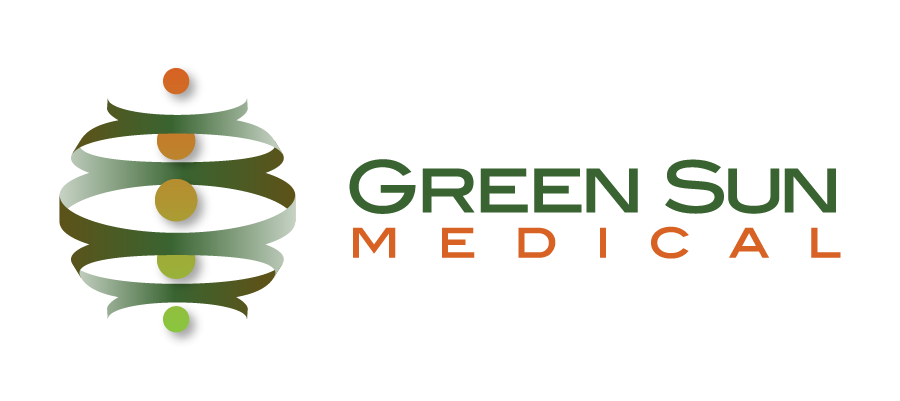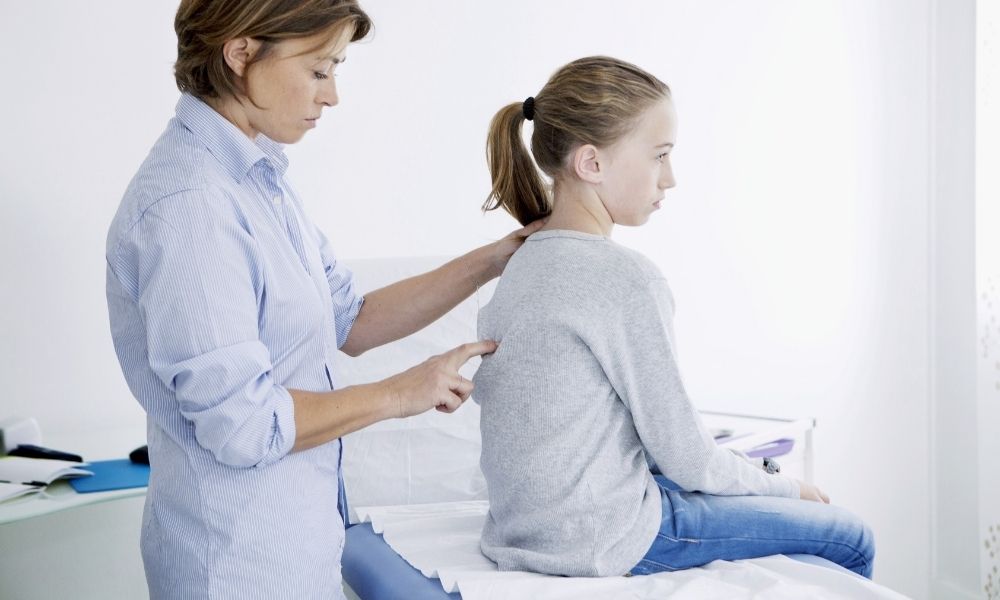Maybe you’ve noticed uneven shoulders or a curve in your child’s spine. Perhaps the school nurse has even recommended that you see a doctor. It’s time to find out what scoliosis is, and how it affects your child. Early intervention is key to treating this common spinal condition in young children. The more you know, the sooner you can help ensure a better quality of life for your child. Find out all you need to know about scoliosis.
What Is Scoliosis?
A common spinal condition, scoliosis occurs when the spine twists or rotates, resulting in a 10-degree or more curve. Children with scoliosis may have an S- or C-shaped spine. While their spines may look straight from behind, they might have a side-to-side curve that can worsen over time. Scoliosis may occur on both sides of the spine or in different sections, such as the middle or lower spine.
Types of Scoliosis
Scoliosis is the most common spinal condition in school-age children, and it can happen for different reasons. About three million new cases are reported each year, for which about 29,000 surgeries are performed. The type of scoliosis a person has depends on the cause. Types of scoliosis include:
- Idiopathic scoliosis: This type may be diagnosed at any age if the cause of the condition is unknown.
- Congenital scoliosis: A condition that occurs when improper spine development begins in the womb.
- Neuromuscular scoliosis: A condition that is caused by brain, spinal cord, or muscular system disorders.
- Syndromic scoliosis: A condition that develops due to a co-occurring disorder, such as muscular dystrophy or cerebral palsy.
Signs of Scoliosis in Children
You may notice signs that your child is developing scoliosis. It’s important to inspect your children’s hips, shoulders, and back throughout their early development to ensure they are growing properly. Signs your child might be developing scoliosis include:
- Uneven hips
- Uneven shoulders
- Uneven shoulder blades
- Head uncentered with body
- Unusual folds in the skin on the back
- Ribs sticking out to one side of the torso
Catch Symptoms of Scoliosis Early
Beginning childhood scoliosis treatment before any growth spurts may mitigate some of the effects of the condition. It is important to catch signs of scoliosis early to prevent further curvature of the spine. Early intervention results in a better quality of life.
Causes of Childhood Scoliosis
No one knows the cause of most cases of scoliosis. Doctors speculate it may be due to poor posture or carrying heavy backpacks. Research estimates that 30 percent of individuals with scoliosis have a family history of the condition, suggesting a genetic link in some cases. Some are born with it, while most people with scoliosis develop the condition between the ages to 10 and 18. Affecting more girls than boys, scoliosis may be caused by:
- Tumors
- Injury
- Infection
- Different leg lengths
- Hereditary causes
- Conditions of the nervous system
Ways To Prevent Scoliosis
Since there is no known cause for most cases of scoliosis, there is no way to prevent it. Even in cases where the cause is known, there is nothing that could have been done to prevent the spinal curvature. Doctors recommend improving posture and staying active to ensure a healthy spine.
Test Your Child for Scoliosis
Most schools test their fifth-grade classes, since that’s around the typical age when scoliosis may start to develop. It’s also the age when most kids start to go through their growth spurts. For many kids, their school nurse is the first one to notice if they exhibit any signs of scoliosis. Using the Adam’s forward bend, students are asked to bend forward at the waist with their arms straight outward.
When To See a Doctor for Scoliosis
If you or the school nurse notice an abnormality on your child’s back while performing the Adam’s forward bend—or at any other time—you should schedule an appointment with their doctor. Only a doctor can properly diagnose scoliosis.
How To Prepare for Your Appointment
Make sure your doctor knows the reason for your visit before you arrive. Bring a list of questions so you can find out everything you need to know.
How Scoliosis Is Diagnosed
Your doctor will run a series of tests to determine if your child has scoliosis. They may begin with some of the same tests the school nurse did to see if your child’s spine has a curve. Your doctor may ask them to do an Adam’s forward fold. Further, they may measure the length of your child’s legs, the size of any rib humps, and their flexibility. Your doctor may find it necessary to order X-rays, CT scans, and an MRI to uncover the shape of your child’s spine and determine the correct path for treatment and alignment.
Treatment for Scoliosis
Non-Surgical Treatments include:
- Monitoring: In this treatment, children with mild scoliosis undergo consistent monitoring and X-rays every four to six months unless their condition worsens.
- Bracing: More severe cases of scoliosis may require bracing to prevent the condition from developing further. A scoliosis brace is a medical device worn beneath clothing. It is custom-designed to custom fit each individual’s needs.
Surgical Treatments
For the most severe cases of scoliosis, surgery is often recommended. Spinal fusion is an option for those whose spine is curved 50 percent or more, and for those who don’t receive any benefit from bracing. If your spine rotates too far, it can affect your lungs. Spinal surgery straightens the spine by realigning it and fusing the bones together.
Fun Fact: Most patients can walk after the first day of spinal surgery. Children are typically discharged from the hospital after a few days and return to normal life within weeks.
Effects of Scoliosis on Daily Life
Although there’s no doubt that scoliosis can be limiting, early intervention and the right treatment can allow your child to live a normal and fulfilling life. Plenty of children afflicted by scoliosis enjoy sports and various physical activities. If bracing is the recommended treatment for your child, find ways to embrace it. Many different types of braces exist. The best ones are impossible to see under clothes, allow for flexibility, and are easily adjustable.
Understanding what scoliosis is and how it affects your child is important if your child has received a recent diagnosis. Navigating a whole new world of doctors and medical devices may seem daunting, but you have reinforcements. You can support your child mentally while medical staff and equipment support them physically. The Whisper Brace is a revolutionary scoliosis brace designed to accommodate your child’s growth. It is less rigid than a traditional brace, allowing your child to move and function like a typical kid. Ask your doctor about the Whisper Brace today.


